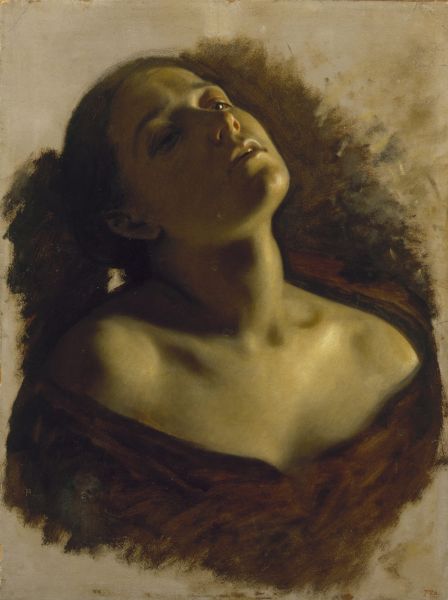|
|
Head of Princess Tarakanova. Study for Princess Tarakanova

Flavitsky Konstantin Dmitrievich. Princess Tarakanova. 1863. The State Tretyakov Gallery


Flavitsky Konstantin,
Oil on canvas
44,5 х 33,5
State Russian Museum
Пост.: 1903 от П.Н.Ге (С.-Петербург)
Annotation
After the death of the childless Empress Elizabeth, pretenders appeared several times claiming to be her daughter. A young and exceptionally beautiful adventuress, known as Princess Tarakanova, appeared abroad in 1772, gave herself as Elizabeth’s daughter, and declared her right to the throne. Catherine the Great ordered Count Alexei Orlov to bring the pretender to St Petersburg. The count pretended to be madly in love with the princess, and promised to marry her and help her ascend to the Russian throne. During a stop in Leghorn, in Italy, he tricked Tarakanova onto the admiral’s ship, which then brought her to St Petersburg. Once there she was imprisoned in the Peter and Paul Fortress, where she died of consumption in 1775 without ever giving her real name. During the 19th century a large number of conjectures grew up around Tarakanova’s fate and she became the subject of novels and plays. One of these myths, which was believed by Konstantin Flavitsky, was that she had died when the Neva overflowed its banks. However, the natural disaster that the artist depicts took place in 1777, two years after the pretender died. The painting Princess Tarakanova was exhibited at the International Exhibition in Paris in 1867, and at the order of Emperor Alexander II the exhibition catalogue contained the note: “The subject of the painting is taken from a novel that does not have any historical truth.” This study from the collection of the Russian Museum expressively portrays the suffering of the young woman, and the artist later included it in the finished work.
Author's Biography
Flavitsky Konstantin
Flavitsky, Konstantin Dmitrievich
1830, Moscow – 1866, St Petersburg
History painter, portraitist, worked on commissions for churches. Born into a family of a civil servant. As a child, moved with his parents to St Petersburg. As a gifted child, was under the patronage of the Society for the Encouragement of Artists. Studied at the Imperial Academy of Arts. Fellow of the Imperial Academy of Arts in Rome (1856–1862). Contributed to exhibitions of the Imperial Academy of Arts (from 1863). Professor (1864).

